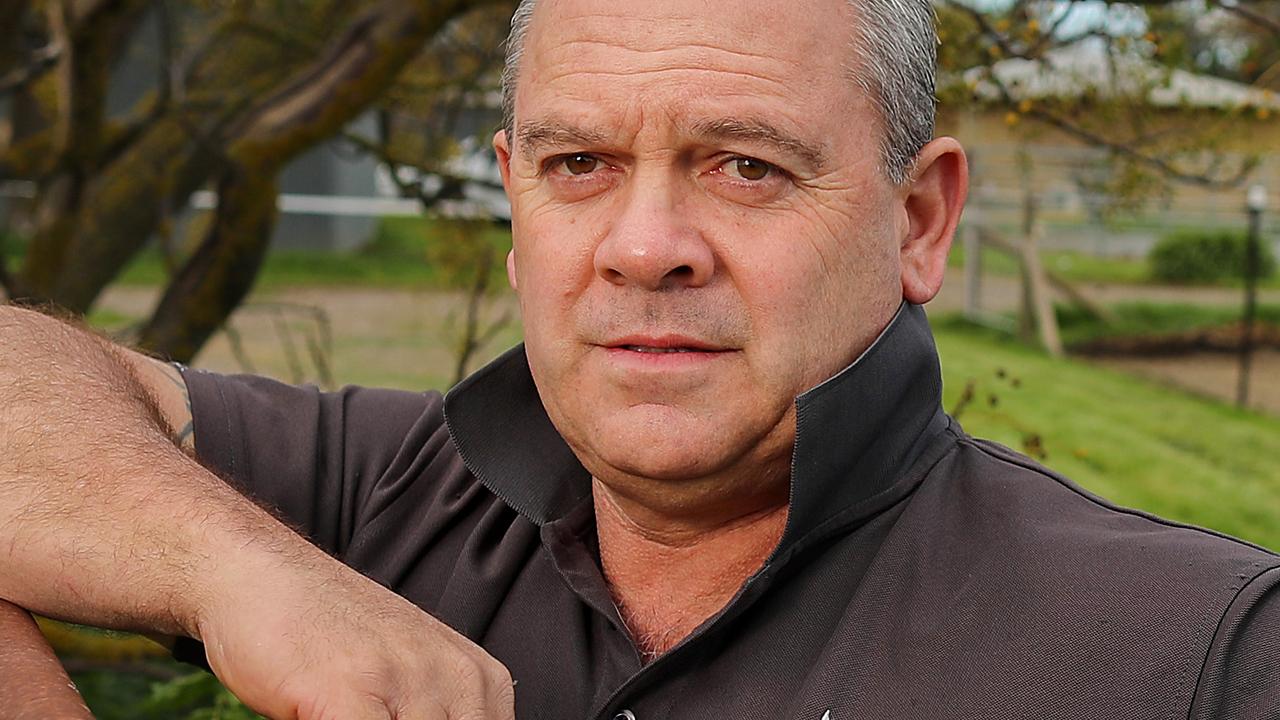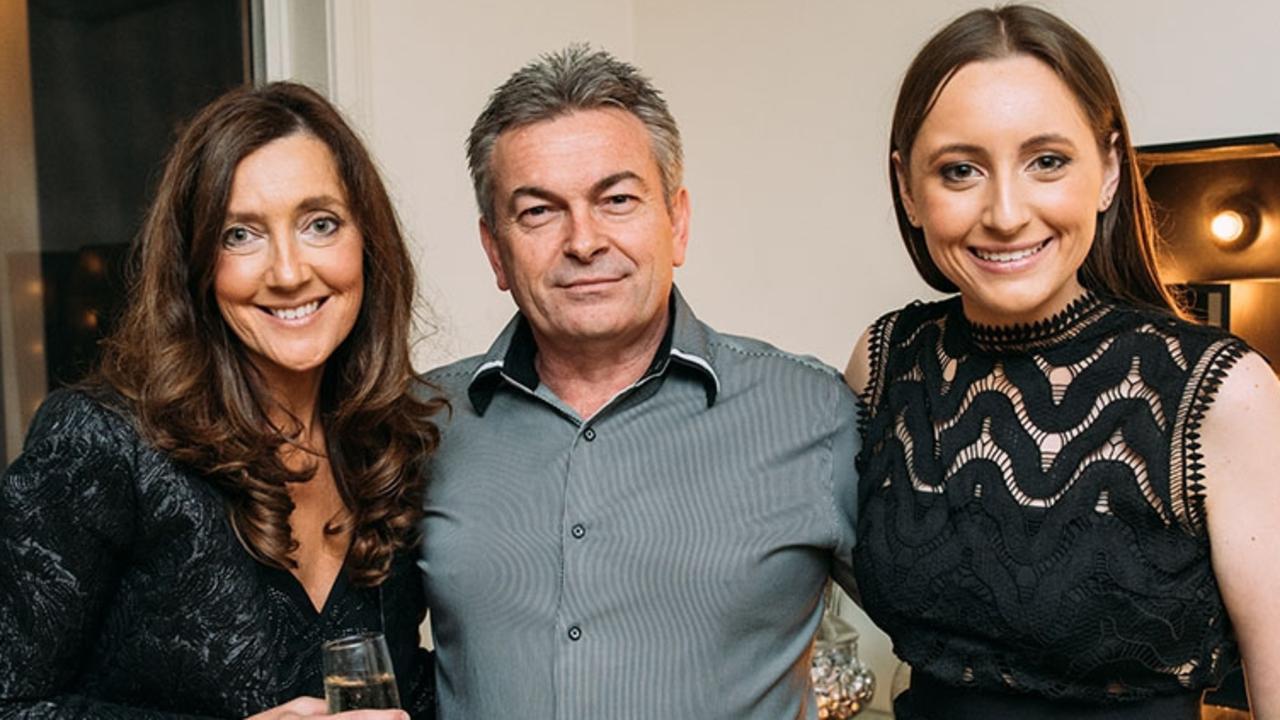Andrew Rule: Aubrey Broughill’s demise — tortured or turtles?
Signs of foul play surrounded the death of scallywag Aubrey Broughill, known as the Beanie Bandit and Grandpa Harry. And there were two important things missing when his body was finally found.

Andrew Rule
Don't miss out on the headlines from Andrew Rule. Followed categories will be added to My News.
The only time I met “Grandpa Harry”, also known as “the Beanie Bandit” was in Pentridge Prison.
He was an inmate, doing time for bank robberies. I was a visitor, there to ask him a personal question.
Was it true that he had embarked on a string of robberies in his 60s because he wanted to provide for a young daughter?

The story had filtered through from armed robbery detectives, who wondered why this amiable old timer had gone back to robbing banks at an age when he could have moved from the dole to the age pension (or both, if he had some false ID) and a bit of casual pilfering.
The detectives, who rather liked him, got the impression he was doing his own rough version of what older parents do to provide for their offspring — setting up trust funds and the like.
The old crook didn’t have a trust fund.
But two weeks after getting out of prison, he’d raised the funds to buy a trusty, long-barrelled .44 magnum pistol, like the one that Clint Eastwood’s “Dirty Harry” used to make punks feel unlucky.
The giant magnum was why they dubbed him “Grandpa Harry”.
The polite old robber’s other distinguishing feature, apart from the pistol, was the over-size beanie he wore. He didn’t bother with masks, which was why his crime outbreak ended after three months, seven banks and two building societies. Eventually a security camera nailed a clear picture of him.
He’d withdrawn a total of $70,000, which in 1986 was the price of a renovated inner-suburban terrace house. Oddly, little cash was recovered, yet there was no sign that “Grandpa Harry” had spent it in the usual ways.
There is absolutely no reason to assume an old-school detective misplaced any cash before it reached police headquarters, because that would be careless. The police didn’t uncover the cash but reckoned they knew the reason for its absence.

The old crook’s name was Aubrey Broughill — a name inked into police files and court and prison records since World War II. The story went he’d had a baby daughter with a younger woman and, being an older father, wanted to provide for the girl after he was gone. The old armed robber knew only one way to do that.
When I put that to him (via the phone behind the thick glass in the visiting “box”), he nodded. Asked how the financial arrangement would work, he went quiet and said “friends”. Subject closed.
He was a little more open on some biographical details. Not so much on his criminal record, which stretched back to 1938, when he was charged with house breaking at 12. But he said he’d once been a boundary rider on an outback station. Another time he had kept a low profile working in the kitchen at a girls’ boarding school. He didn’t mention which school.
The interview went as well as it could.
But Aubrey had a change of heart the next day, and wrote a letter demanding it not be used.
The last words in his wobbly handwriting: THINK ABOUT IT, YOU’VE GOT FAMILY.
Just to make the message clear, a brick turned up in the letter box of our temporary, rented house. No note attached, but it meant “I know where you live and I know people who will go there”.
Aubrey was doing 16 years with 12 “on the bottom”. A detective had marked his file “will probably reoffend if he is ever released”.
It was a safe bet. He was paroled in late 1995 and moved in with a younger sister but, when his savings were gone, he went back to crime.
But the old stick-up man had lowered his aim. No more “Grandpa Harry”. This time he was just tagging along with a gang of South Australian thieves, led by a father-and-son pair from the Riverland area.

The wandering thieves stole computers and mowers and the like through country Victoria and South Australia. On January 12, 1999, Victorian police arrested Aubrey and four others, including the father-and-son pair.
He was charged with 19 offences and released the following day at 4am. It was his 73rd birthday. Next day, January 14, he saw a doctor in Adelaide and got some tablets.
A few weeks later, a Wodonga quarry manager, Reg Golding, saw what he first thought was a dead animal floating near the shore of a flooded quarry. It was a short walk from where a fence was being repaired on the edge of the stretch of water behind a concrete mixing plant.
When Golding realised the body was a man, he called the police.
The first detective on the scene saw the heads of several “tortoises” bobbing around near the body.
They dragged the corpse to the bank. The dead man was wearing a shirt and his jeans were down, caught around his left ankle.

In the jeans was spectacles in a case and a wallet with $208.90 and Medicare, Pension and Seniors cards — and a driver’s licence for Aubrey Maurice Broughill. No matter how he had died, it wouldn’t be because he’d been taking a cool dip.
There were other signs of foul play.
There was no car — and police found no indication he’d taken public transport to Wodonga, or that he’d stayed in any hotel or motel or refuge in the area. In other words, he had surely arrived with someone else.
There was one other disturbing thing. In fact, two — the dead man’s testicles were missing.
One possibility is that he accidentally drowned in the quarry and that the “tortoises” ate his cojones.
The other theory is that he was tortured then dumped in the water to die.
Experts identified the “tortoises” as the eastern snake-necked turtle, which fancies insects, tadpoles and the occasional slow frog. But it is also an expert scavenger and has sharp teeth and front claws used to tear any rotting meat it finds.
The turtle factor was enough to muddy the water, so to speak, about the way Aubrey died, although the experts wondered why the turtles would neatly nip off his testicles and not damage other soft parts of his anatomy.


Five days later, Victorian detectives visited a property near Renmark in South Australia, and spoke to a man arrested with Aubrey weeks earlier. He was nervous and the police thought he was lying about the last time he’d seen his co-offender. He claimed that Aubrey was unsteady on his feet and often tripped. He also offered the preposterous theory that rogue Victorian police had “done him in”.
The police didn’t believe him. Neither did Aubrey’s sister, who told them her scallywag brother was very fit and agile for his age, despite his diabetes, gout and bad heart. And, she said, he had been the strongest swimmer she’d ever seen.
The death of Aubrey Broughill is just another cold case. So are the presumed murders of four South Australians who also had the bad luck to be associated with the father and son from Renmark in the 1990s.
One of the four was Juan Morgan, a teenage boy whose body has never been found. It is not the snake-necked turtles you have to watch, it’s the snakes.
MORE RULE:



